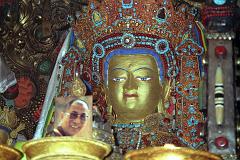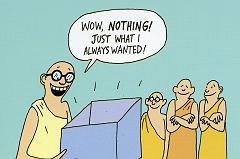
 |
Home | Contact |
Links To Photo Galleries



Links To References
Updated: November 2009. Click on an image to see the FULL size with a caption.
Milarepa: Just to leave one's homeland is to accomplish half the Dharma
I guess it was inevitable that I would be strongly influenced by Buddhism with the number of times I have visited Tibet and the mountains of Nepal. I have progressed over the years from a casual interest as a tourist to more in depth study and appreciation.
Please see my travel sections on Tibet, Mount Kailash, and Guge Kingdom, and any of the Nepalese mountains.
Check out my top 20 Buddhist objects at the British Museum.
Follow the top set of links on the left to prepare for your travel to Tibet the mountain area of Nepal, and other Himalayan areas. This includes the key deities like Shakyamuni Buddha and Padmasambhava, the most common symbols like the prayer wheel and mantras, a mandala, and the Wheel Of Life.
The middle links on the left hopefully bring a little humour to Buddhism with a game show hosted by Simon Cowell, and my favourite comics and birthday cards with Buddhist sentiments.
Follow the lower set of links on the left to learn more and more about Buddhism, including my favourite adult books and reference books. My favourite authors are Thick Nhat Hanh, Robert Thurman, and His Holiness The 14th Dalai Lama.
My son and I have read many Buddhist books together over the years as he grows up from an infant to a teenager.
There are also a few website links and my favourite DVDs.
Albert Einstein: The religion of the future will be a cosmic religion. It should transcend personal God and avoid dogma and theology. Covering both the natural and the spiritual, it should be based on a religious sense arising from the experience of all things natural and spiritual as a meaningful unity. Buddhism answers this description. If there is any religion that could cope with modern scientific needs it would be Buddhism.
Old Tibetan Proverb: Man says Time passes. Time says Man passes.
Aristotle: We are what we repeatedly do. Excellence, then, is not an act, but a habit.